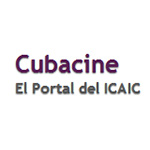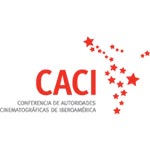De padres rusos y nacido en Chile, el director, guionista y actor Alejandro Jodorowsky Prullansky alcanza la fama mundial con dos filmes vanguardistas de culto: El Topo (1971) y The Holy Mountain (1973), pero en su incomparable currículo se cuentan también manifestaciones artísticas como el circo (forma una troupe siendo muy joven en Chile), y la mímica (en 1955 emigra a París, donde estudia ese arte con Marcel Marceau), además de escritor, filósofo, actor, marionetista, dibujante, maestro de tarot, practicante de la sicomagia, poeta y, últimamente, intérprete de chistes. En su Chile natal, se le recuerda como historietista y animador de los tempranos años cincuenta; como autor del diario mural Quebrantahuesos, dislocado informativo de factura surrealista que se exhibía en una vitrina de El Naturista.
Hacia 1960 escribía y dirigía teatro entre París y México. Fue el cofundador de la revista surrealista S. Nob y, junto con el dramaturgo Fernando Arrabal, formó la compañía de teatro del absurdo Producciones Pánicas, fuertemente influida por el trabajo de Antonin Artaud. Su primera obra fue la escandalosa experiencia multimedial de cuatro horas Melodrama Sacramental, presentada en el Festival de Libre Expresión en París, en 1965. Renuncia al teatro y regresa a México, donde comienza a experimentar con el cine. En este sentido, su primera obra fue Fando y Lis (1968), historia de amor fellinesca sobre la corrupción de la inocencia y el amor sadomasoquista.
Escrita, dirigida y protagonizada por Jodorowsky en 1971, quien además compuso la partitura, El Topo narra la historia de un cowboy violento y su hijo, de sus encuentros con delincuentes, criminales, hippies y lesbianas, mientras los dos van en busca del conocimiento y la redención, mientras el protagonista trata de eliminar a cuatro maestros pistoleros para convertirse en el único de su especie. No era fácil para nadie discernir un significado único para el filme, pero eso no fue importante para John Lennon, quien enloqueció con la película, convenció a su manager para comprarla, la distribuyó por Estados Unidos y consiguió financiamiento para el nuevo guión de Jodorowsky, La montaña sagrada (The Holy Mountain).
The Holy Mountain (1973) también contaba la historia de un marginal y de sus dantescos viajes urbanos, pero en general fue catalogada como demasiado pretenciosa y decepcionante. El filme combinaba el simbolismo bíblico con las imágenes de la mitología moderna sobre el wild west. 45 minutos de La montaña sagrada pasan sin diálogo, sólo con imágenes tales como una masiva procesión de soldados marchando, llevando corderos sin piel, crucificados y con el corazón colgando, quienes ejecutan a los habitantes de la ciudad, que derraman sangre azul y de sus heridas salen volando pájaros. El filme, que trata de la búsqueda de la inmortalidad, fue presentado en el Festival de Cannes en 1973.
Fue por esta época que comienza a experimentar con el comic, creando el personaje Aníbal 5, con el artista mexicano Manuel Moro, e ilustra sus propias series, Fábulas pánicas, para una revista mexicana. Su trabajo como guionista de historieta ha dado obras tan importantes como La saga del incal, dibujada por Moebius; su continuación, La casta de los metabarones, hecha junto al argentino Juan Jiménez y Alef - Thau.
Jodorowsky comienza a trabajar en 1975 en una adaptación de Duna, de Frank Herbert, que proyectaba involucrar a Orson Welles, Salvador Dalí, Gloria Swanson y Pink Floyd, pero se evaporaron los fondos y fue sustituido a última hora por David Lynch. En 1980, escribe y dirige Tusk, filmada en la India y con la historia de una niña y de un elefante que nacen el mismo día. En 1989 su carrera adquiere un segundo aire con la coproducción Santa sangre, historia de un asesino en serie redimido por amor, en una anécdota conectada con muchas otras y con un estilo visual que solo puede compararse a la imaginería de las peores pesadillas. Buñuelescamente se entremezclan tragedia, violencia, romance y surrealismo.
En Gran Bretaña realiza Rainbow Thief (1990), el menos personal de sus proyectos (con Peter O´Toole y Omar Shariff), Viaje a Tulún (1994) y Abelcaim (1999), las cuales muestran un retorno a la forma y el estilo típicos del cineasta.
He was born in Chile and is the son of Russian parents, director, script writer and actor, Alejandro Jodorowsky Prullansky gains world fame with two avant-garde cult movies: El Topo (1971) and The Holy Mountain (1973), but in his incomparable curriculum there are other artistic experiences such as the circus (he was part of a troupe in Chile when he was very young) and mimics (in 1955 he migrates to Paris where he studies that form of art with Marcel Marceau), he is also a writer, philosopher, actor, puppeteer, drawer, Tarot Master, psycho-magic practitioner, poet and recently joke interpreter. In Chile, his fatherland, he is remembered as story-teller and entertainer of the early 1950´s; besides, as the author of the mural journal Quebrantahuesos, an out of place periodical of surrealist making which was exhibited at the El Naturista glass case. Around 1960 he was writing and directing theatre plays between Paris and Mexico. He was the founder of the surrealist magazine S. Nob and, together with playwright Fernando Arrabal, he formed the theater company of the theater of absurd Producciones Pánicas, very much influenced by the work of Antonin Artaud. His first work was an outrageous experience of a four hour long multimedia titled Melodrama Sacramental, presented at the Free Expression Festival of Paris in 1965. He quits theatre and goes back to Mexico where he begins to experiment with cinema. In this field, his first work was Fando and Lis (1968), a Fellini like love story about the corruption of innocence and the sadomasochist love.
Jodorowsky wrote, directed and stared in El Topo, 1971, he also composed the music. El Topo narrates the story of a violent cowboy and his son, their encounter with crooks, criminals, hippies, and lesbians while they go in search of knowledge and redemption and the leading character tries to eliminate four master gunmen so as to become the only one of his kind. It was not easy for anybody to make out a unique meaning for the film, but that was not important for John Lennon, who went crazy with it, convinced his manager in order to buy it and distributed the film around the United States, he later obtained funding for Jodorowsky´s new script, La montaña sagrada (The Holy Mountain).
The Holy Mountain (1973) also told the story of a marginal character and his Dantesque urban trips, but in general terms is was typecast as too ambitious and disappointing. The film combined biblical symbolism with images of modern mythology about the Wild West. There are 45 minutes of the film where there is no dialogue, just images such as a massive procession of soldiers marching, carrying sheared lambs, crucified and with their hearts hanging; they execute the city inhabitants who spill blue blood and have flying birds coming out of their wounds. The film deals with the search for immortality and was presented at the Cannes Festival in 1973.
This was the time when he began to experiment with comics, creating the character of Aníbal 5, with Mexican artist Manuel Moro, and he illustrates his own series, Fábulas Pánicas for a Mexican magazine. His work as comic script writer has produced very important pieces such as La saga del incal, drawn by Moebius; the continuation, La casta de los metabarones, made together with Argentinean artists Juan Jiménez and Alef - Thau.
Jodorowsky begins to work in 1975 in an adaptation of Duna, by Frank Herbert, which intended to get Orson Welles, Salvador Dalí, Gloria Swanson and Pink Floyd involved, but the funding was not available and he was substituted in the last moment by David Lynch. In 1980 he writes and directs Tusk, filmed in India and with the story of a girl and an elephant that are born on the same day. In 1989 his career acquires a second wind with the co-production Santa Sangre, the story of a serial killer redeemed by love; this is a film that presents an anecdote connected with many other anecdotes and with a visual style that can only be compared to the imagery of the worst nightmares. Tragedy, violence, romance and surrealism intermingle in the surrealistic style of Buñuel.
In Great Britain he made Rainbow Thief (1990), the least personal of his projects (with Peter O´Toole and Omar Shariff), Viaje a Tulún (1994) and Abelcaim (1999), all of which show a return to the typical form and style of the filmmaker.
 “Nuestro objetivo final es nada menos que lograr la integración del cine latinoamericano.
Así de simple, y así de desmesurado”.
“Nuestro objetivo final es nada menos que lograr la integración del cine latinoamericano.
Así de simple, y así de desmesurado”.













